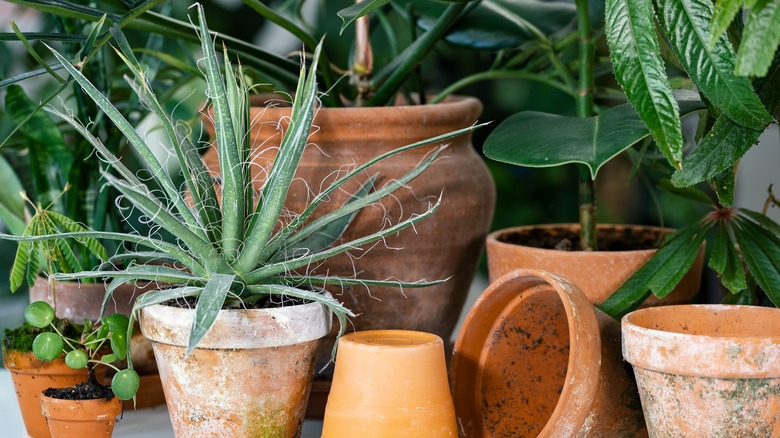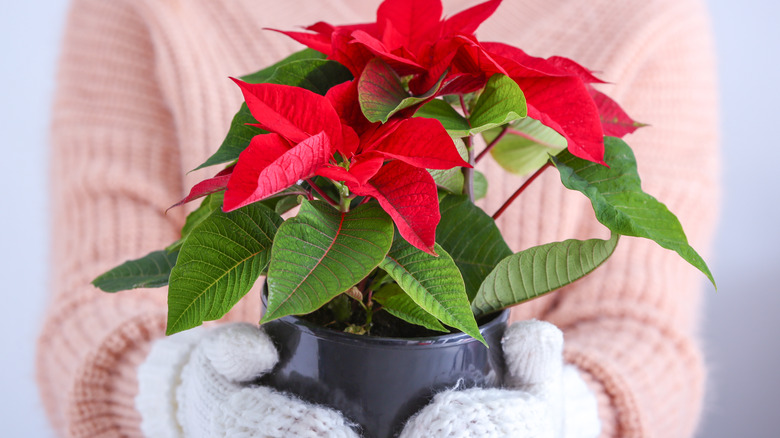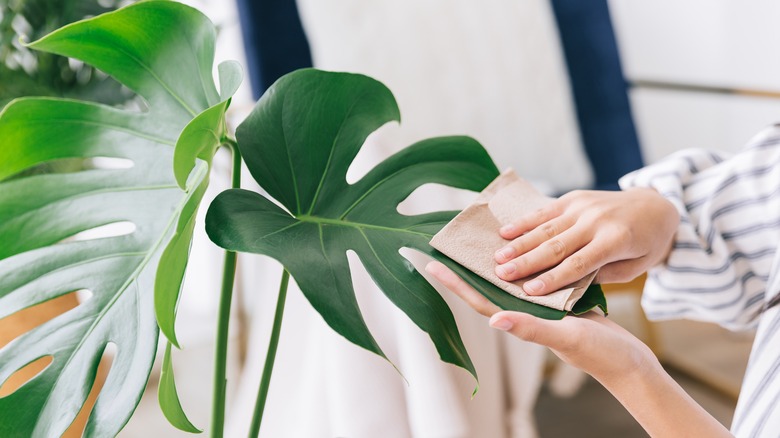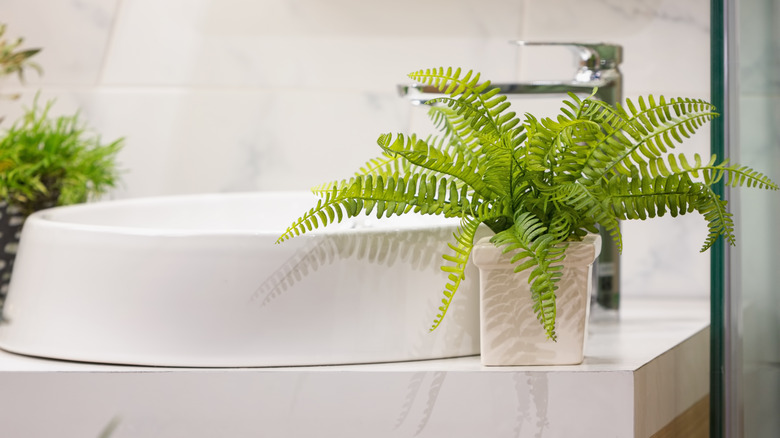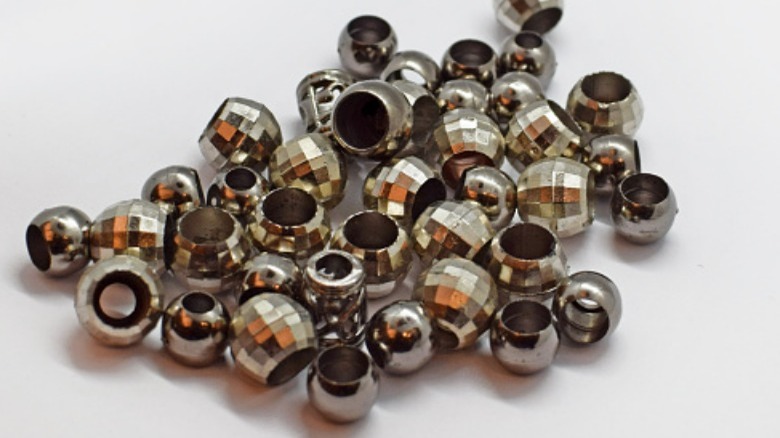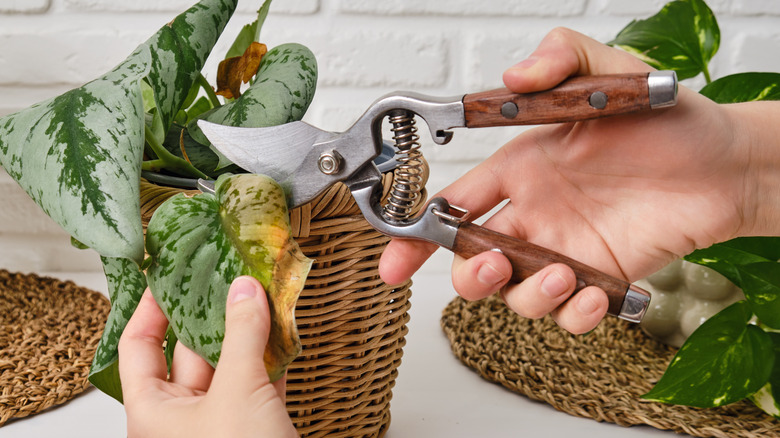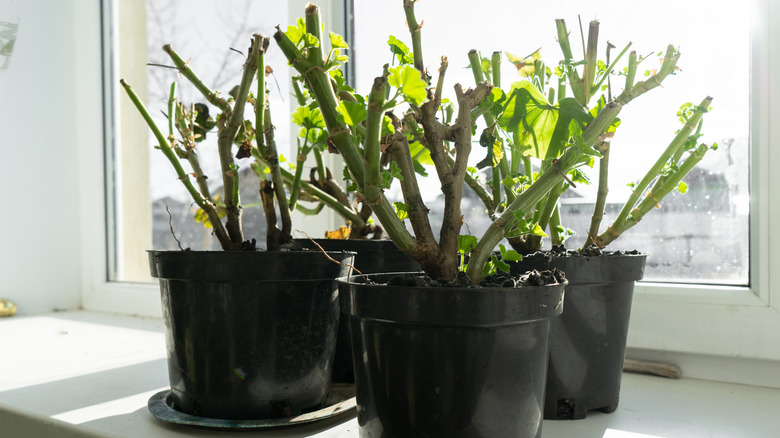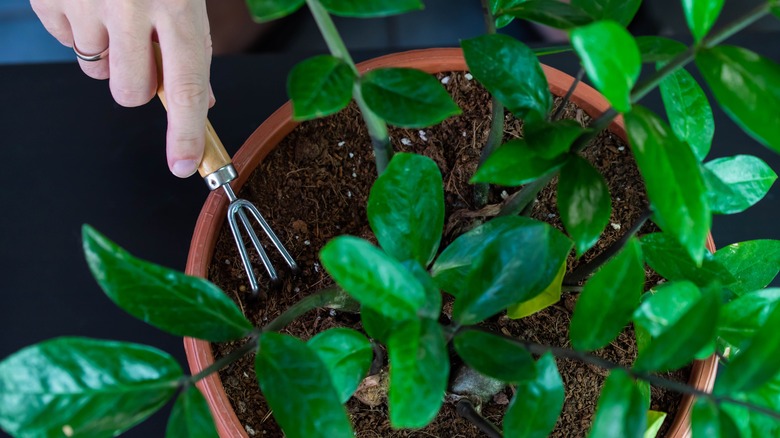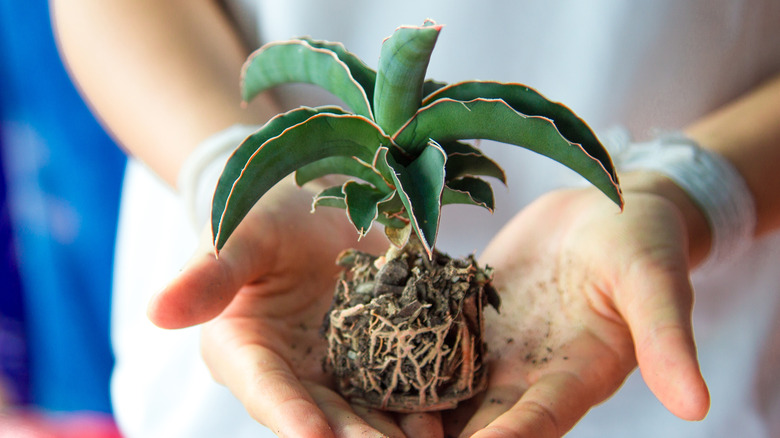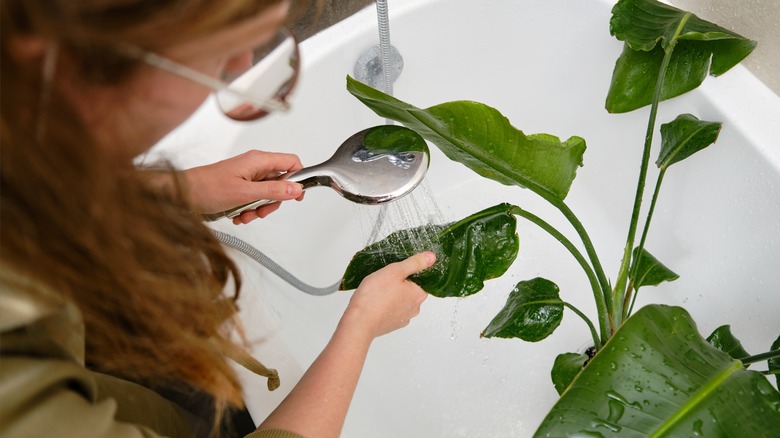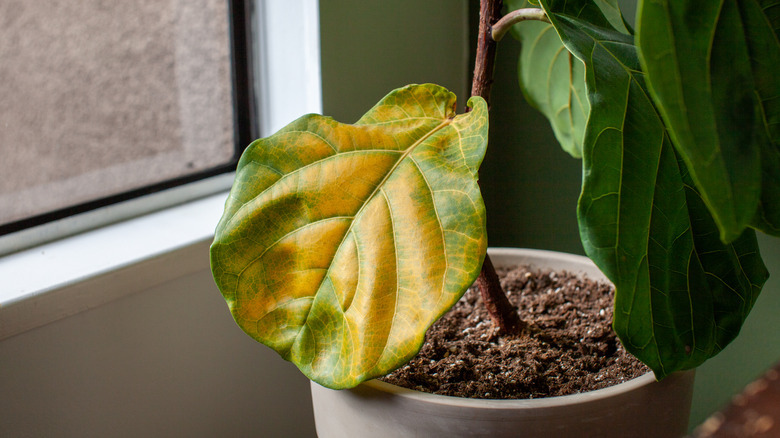11 Easy Ways To Pamper Your Greenery For Houseplant Appreciation Day
Calling all houseplant lovers, hobbyists, and aficionados. National Houseplant Appreciation Day is January 10! If enjoying nature inside your home is on your list of goals for the new year, use this day to go above and beyond. Over the holidays, many of us neglected our household shrubbery to focus on Christmas shopping, spending time with family, and preparing for the New Year. As the celebration season ends, we can bring the focus back onto ourselves and the things that bring us joy in our everyday lives, like the greenery that graces our homes.
Although overwatering, over-fertilizing, or over-pruning is bound to do far more harm than good, it doesn't hurt to pamper your plants whenever you feel they need a spa day. Many of them carry the household on their metaphorical backs by making the air cleaner, the vibes happier, and the aesthetic of your home greener. Not to mention all the other benefits of tending to indoor greenery, like healing from illness more quickly, as mentioned by Healthline. So join us in celebrating National Houseplant Appreciation Day by pampering your plants to your heart's content.
1. Buy another one
Buying another plant is a great way to celebrate National Houseplant Appreciation Day. Not only can you save a spritely young dracaena from neglect, but you will also be helping your existing houseplants. According to Braid and Wood, keeping potted plants in groups helps them create a pocket of necessary humidity. However, you should be careful not to keep them too close together. If their leaves touch, they are at risk of developing a pest infestation or triggering a genetic defense that causes them to grow more slowly.
2. Protect them from the cold
Houseplants are susceptible to certain problems due to the cold. This is why it's essential to prepare them for the cold season. Most of us keep our heat-loving plants near a window or even on a sill so that they can receive plenty of sunlight during the warmer months. However, as it grows colder outside, you must move them away from cool drafts and chilly windows. As noted by BioAdvanced, you should not keep your houseplants near a heater in the winter either, as the air will be too dry.
3. Dust their leaves
Just like your dusty furniture, your household greenery should be wiped down from time to time. The Sill recommends wetting a rag with plain water or creating a cleaning mixture with water, vinegar, lemon juice, or mild soap. If you're new to caring for your plants this way, however, it's probably best that you stick to plain water for now. When you're ready, simply wipe each leaf gently with a cloth. This process makes your houseplants shinier and prettier, and allows their leaves to absorb the winter sunlight more efficiently.
4. Take them for a dip
As you likely know, top watering, which involves wetting soil from the top, is the typical way of hydrating houseplants. But, as people who have been in the game for some time will tell you that there is a better way to water. Bottom watering is when you hydrate your plants from the bottom by submerging the pot while the soil and roots soak it up, as taught by Houseplant Resource Center. This may help reduce the risk of overwatering and keep your plants from becoming rootbound.
5. Give your plants some ice
Wait! Not actual ice! Ice, like bling, drip, or jewelry. A trendy way to pamper your plants is by adding beads and clips to their stems for a touch of glam. Fernhateclub on TikTok shows how they add jewelry to theirs by slipping beads over new growth and clipping plastic dragonflies to older, more sturdy stems. Comments below the post suggest using beads with large holes on inexpensive and resilient plants like pothos or philodendrons.
6. Prune overgrown stems
After a long year, your houseplants may grow too large and become unbalanced. If this is the case, some pruning is in order. Per Houseplant Resource Center, you should only need a sharp and clean pair of shears to prune. Before making the first cut, think carefully about your approach. It's important to trim thick growth so new stems and leaves can emerge. If it's your first time pruning, don't cut too much off all at once. Some plants can't handle many leaves being removed in one go.
7. Don't disrupt their hibernation
Sometimes, the best way to pamper a plant is to give it some alone time. In the winter, most plants enter hibernation and need much less attention than they do in the summer. Outside of its growing season, your plant needs less water, fertilizing, and care. According to Pistils Nursery, you should plan to repot in the spring when they are growing quickly. However, try to avoid repotting in harsh weather, as it can unnecessarily stress them out.
8. Aerate their soil
Aerating your soil can be highly beneficial as it's similar to giving plants some much-needed fresh air. As stated by Pilea, the easiest way to do this at home is by locating a thin and dull object like a chopstick, a popsicle stick, or an unsharpened pencil. Then, gently push the stick into the soil down to the plant roots. This allows air to flow and circulate down. You can do this once a month, but be sure to water your plant afterward and not beforehand.
9. Check their roots
Though we usually don't have to check our plants' roots until we notice leaves falling and stems wilting, it's never a bad idea to give them a look once a year. With opaque containers, it's easy to let problems fester unchecked until it's too late. On National Houseplant Appreciation Day, consider gently taking your houseplants out of their pots for only a few minutes to look for soft brown roots that indicate root rot, as told by Pennington.
10. Check for pests
Checking for pests is as important as checking for root rot. Pests tend to hide under the leaves of our favorite houseplants and chow down on their leaves and stems, causing spots, yellowing, or distorted growth (per BioAdvanced). So now is a great time to get in the habit of checking your plant for pests regularly. Typically you can find them hiding under the leaves or near the stem on new growth. Many pests (like aphids and mites) can be killed by rinsing, wiping them away with a damp rag, or spraying them with neem oil.
11. Get rid of browning or yellowing leaves
Browning or yellowing leaves are typically not a death sentence for your plant. Although they can indicate destructive diseases, their cause is most likely too much stress, water, sunlight, or fertilizer. Alternatively, it could also be too little water or sunlight. After ensuring that the leaf problem isn't caused by root rot or pests, Pennington says you may cut the browning area off with clean, sharp shears. However, be sure that you care for your plant properly in the future to avoid losing it altogether.
